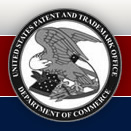Static URLs? We don’t need no stinkin’ static URLs!

The United States Patent and Trademark Office (USPTO) handles both patents and trademarks, but the patent side of the house lags behind the trademark side of the house in implementing user-friendly technology. Over the weekend, the USPTO updated the URL format that it uses for it’s public PAIR system <http://portal.uspto.gov/external/portal/pair> (PAIR stands for Patent Application Information Retrieval).
PAIR is used by patent applicants, patent practitioners, and the public at large to check the status of pending and issued patent applications. The public PAIR portion is for applications that have been published or issued, the private PAIR system is for the rest (and requires a special encryption key to access, which is available to patent practitioners).
My patent and trademark law firm, Clock Tower Law Group <http://www.clocktowerlaw.com/>, routinely sends static URLs to clients so that they can monitor the progress of their own applications. We also monitor all of these URLs. One of the reasons that we proactively monitor URLs for our clients is because we believe that it is better to prevent problems before they get out of hand. For example, one of our client’s trademarks was accidentally assigned to Viacom due to a USPTO error. If we had not been monitoring our client’s trademarks, then this problem may not have been discovered.
Trademark URLs have a very simple format (based on the trademark application number).
For example, here is the URL for one of our client’s trademarks (the KAYAK.COM trademark):
<http://tarr.uspto.gov/servlet/tarr?regser=serial&entry=78640286>
And here is the URL for one of our own trademarks (the CLOCK TOWER LAW GROUP logo trademark):
<http://tarr.uspto.gov/servlet/tarr?regser=serial&entry=78614746>
The Trademark Office’s TARR URLS (TARR stands for Trademark Application and Registration Retrieval – the USPTO loves its acronyms) are very helpful. They include the current owner, current attorney, current status, and a brief prosecution history. Perfect, really. And they are constantly updated.
The Patent Office’s PAIR URLs, on the other hand, are ugly, long, and difficult to parse. But up until today, they were at least functional. Here is the URL for one of the patents we prosecuted (for Inceptor, now owned by Idearc):
Hint: the above URL does not work.
Note the “09456777” in that URL, which is the patent application number for this application, which issued as United States Patent 7062707 <https://www.giantpeople.com/648.html>.
The irony is that if you search for the application and bookmark one of its URLs (such as the file history tab), then you will get a URL of the above format. You can bookmark the URL for that tab, and another tab, and both will work, but only for the duration of your browser session. If you quit your browser and restart, then those URLs will not work. Until today, it did not work like this.
It gets worse. The PAIR system is setting a cookie on your system, which includes session data. The cookie expires at the end of the session, but the URL appears to depend on the session data in the cookie. I would argue that there is no reason to set the cookie in the first place. There is certainly no reason to have the a static URL depend upon it, and to have the URL expire at the end of your browser session, but that’s how it now works. This also appears to be contrary to the USPTO’s own privacy policy <http://www.uspto.gov/web/doc/privact.htm>, which discloses the use of cookies for other USPTO systems, but not for public PAIR.
Despite the general ugliness of the PAIR URLs, they used to work just fine. You could bookmark them, email them to your clients, or use a URL monitoring service <http://lifehacker.com/software/web-utilities/download-of-the-day-infoic-157706.php> to monitor their status.
It’s bad enough that neither the Patent Office nor the Trademark Office offer ATOM or RSS feeds for trademark status (TARR) and patent status (PAIR), but it’s unforgivable that the Patent Office broke millions of static URLs over the weekend without notice (or apparent reason).
If you are as upset about this as I am, then please send email to the USPTO Electronic Business Center at ebc@uspto.gov and urge them to restore static URLs, to simplify and standardize their formats, and not to change the URLs without adequate public notice and comment.
You could also urge the USPTO to add ATOM or RSS feeds, but one step at a time.
In the spirit of full disclosure, Kayak and Inceptor are/were clients of Clock Tower Law Group and are mentioned in this article.



John; Just go to the PAIR site and you’ll find this:
“To continue, you are required to enter the verification code as shown in the box below. This step helps prevent disruptive use by automated programs. For information on PAIR Usage Policy, visit http://www.uspto.gov/ebc/index.html.”
What exactly is the USPTO’s publicly stated reason for making it more difficult to obtain this information?
PAIR is back up and running… with Recaptcha.
PAIR–via Recaptcha–is employing a proprietary MPEG audio layer 3 CODEC that precludes some users (like me) who choose not to pay for it (directly or indirectly).
Let’s see how long it takes for someone to figure out how to programmatically get around their latest hurdle.
Here’s what one blogger wrote about captchas:
“Of course, it’s no help to the clever counter-attack strategy of bots getting people to solve CAPTCHAs in exchange for access to porn”
So, can one conclude that the USPTO is implicitly contributing to porn access? Heh heh.
I have uploaded a “first look” at the PAIR captcha scheme here:
http://i12.tinypic.com/82050et.jpg